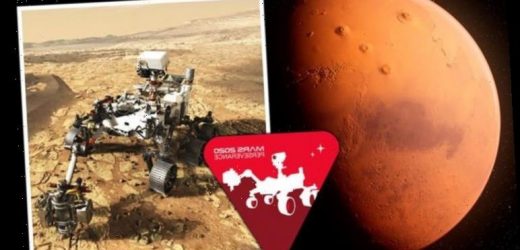NASA test Perseverance rover ahead of Mars mission
Launched in July last year, NASA’s Mars Perseverance Rover is now only weeks away from completing the crucial first step of its mission – landing on the planet’s desolate rusty-red surface. The project is one of the space agency’s most ambitious yet, as it is expected to help pave the way for future human expeditions to Mars.
The numbers involved in the NASA mission almost defy comprehension – the spacecraft carrying the rover has already travelled 80.03 million miles (128 million km).
Perseverance will test technologies to help pave the way for future human exploration of Mars
NASA
This has involved the spaceship’s precious cargo travelling through space at average speeds (relative to the Sun) of 51,739mph (83,265kmh).
But the probe’s journey is fast approaching its destination, with a ‘mere’ 6.32 million miles (10.17 million km) remaining, as of Sunday, January 3.
In order to prepare the public for this historic moment in space exploration, NASA has created an interactive site where you can track Perseverance’s progress in real-time.
We will use your email address only for sending you newsletters. Please see our Privacy Notice for details of your data protection rights.
In addition to counting down the minutes until the cutting-tech tech touches-down on Mars, enthusiasts can also learn more about the mission through a wide range of multimedia.
This includes scores of videos, hundreds of images and even a tool allowing people to compare Perseverance with the sizes of previous NASA probes.
NASA’s Mars Rover is scheduled to land in the Jezero crater, north of the Martian equator, on Thursday, February 18.
How will the Perseverance rover land on Mars?
The Perseverance rover mission will use the latest technology in order to maximise its chances of successfully descending and landing in the Jezero crater.
As with Perseverance’s precursor, the Curiosity rover, this latest probe will use a guided entry, descent, and landing system.
This will make use of a parachute, descent vehicle, and an approach called a ‘skycrane manoeuvre’ for lowering the rover on a tether to the surface during the final seconds before landing.
NASA said: “This type of landing system provides the ability to land a very large, heavy rover on the surface of Mars in a more precise landing area than was possible before Curiosity’s landing.
DON’T MISS
Valorant 1.06: Patch notes confirmed following Nebula skins leak
Hubble snaps a breathtaking pic of the Red Rectangle
Woke agency to axe ‘harmful’ cosmic nicknames
“Mars 2020 takes things one step further. It adds new entry, descent, and landing technologies, such as Terrain-Relative Navigation.
“This sophisticated navigation system allows the rover to detect and avoid hazardous terrain by diverting around it during its descent through the Martian atmosphere.
“A microphone allows engineers to analyse entry, descent, and landing.
“It might also capture sounds of the rover at work, which would provide engineers with clues about the rover’s health and operations, and would be a treat to hear.”
What is the NASA Perseverance rover’s mission?
The Perseverance rover has four science objectives that support the Mars Exploration Program’s science goals.
These include looking for habitability, seeking biosignatures, caching samples and preparing for humans.
A key function of Perseverance Rover is to search for signs of ancient alien microbial life.
The rover has been equipped with a drill for collecting core samples of Martian rock and soil.
These will then be sealed in tubes awaiting collection by a future mission, which will then return them to Earth for detailed analysis.
NASA said in a statement: “Perseverance will also test technologies to help pave the way for future human exploration of Mars.
“Strapped to the rover’s belly for the journey to Mars is a technology demonstration — the Mars Helicopter, Ingenuity, may achieve a ‘Wright Brothers moment’ by testing the first powered flight on the Red Planet.
“There are several ways that the mission helps pave the way for future human expeditions to Mars and demonstrates technologies that may be used in those endeavours.
“These include testing a method for producing oxygen from the Martian atmosphere, identifying other resources (such as subsurface water), improving landing techniques, and characterising weather, dust, and other potential environmental conditions that could affect future astronauts living and working on Mars.”
Source: Read Full Article


